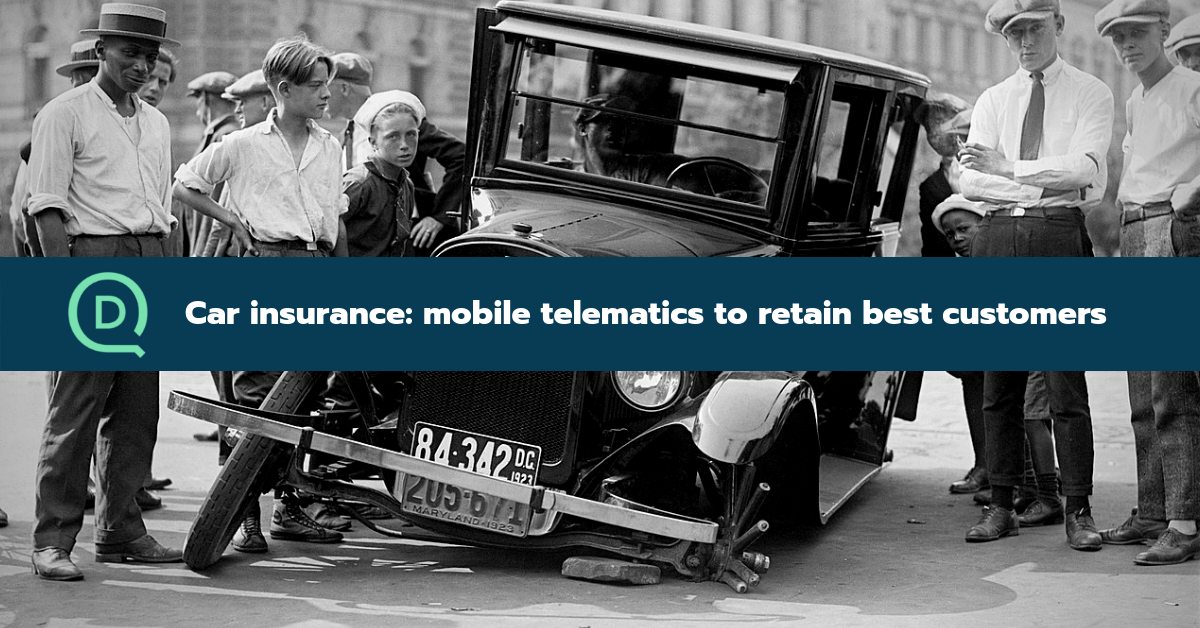Car insurers face a twofold challenge: on the one hand, road traffic is increasing worldwide and those drivers are traveling more and more miles. On the other hand, new risks are emerging. For example, the frequent use of smartphones while driving leads to an increase in the number of claims that insurers must also cover. Faced with these new challenges, embedded telematics solutions can provide new solutions, increase your policyholders' satisfaction ratings and improve customer retention rates.

Car insurance in large deficit according to Standard & Poor's
As the frequency and severity of claims increases, car insurers are faced with a sharp decline in their profitability. Standard & Poor's Global notes that losses on car insurance increased by 13% in 2016 and that cumulative net losses on personal car insurance reached a record level of USD 154 billion in 2017.

To cope with this increase in claims, most insurers have responded by applying a generalized increase in premiums. Of course, policyholders and especially good drivers do not understand these increases and would like their premiums to be set according to their real risk and no longer according to the "overall driving behavior" of all policyholders. In this sense, a study published by Cambridge Analytica indicates that 73% of policyholders aspire to pay premiums adapted to their real claims potential. Insurers' relationships with their insureds are therefore becoming more strained. The best drivers are looking for alternative solutions.
Reduce claims by influencing driver behavior
To reduce sinistrality and thus losses, some insurers have also implemented road risk prevention policies to reduce the number and severity of accidents.
Today, mobile telematics applications (or data-driven solutions) can provide a real answer to the new challenges facing insurers. They make it possible to reduce the number of accidents, as the road behavior of their users improves thanks to the use of these apps and in particular with 'driving challenges' features. But these embedded solutions are also likely to enable insurers to better identify "high-risk drivers" who, in the long run, will also be able to improve their driving behavior by using the DriveQuant mobile application reports.
When smartphones make roads safer
DriveQuant offers an embedded telematics solution, which makes it possible to use data from smartphone sensors and accurately analyse the driving behavior of policyholders. Such a solution allows car insurers to segment drivers by setting performance indicators. Pricing is becoming more rational, easier for policyholders to understand and better adapted to each driver. "We note among our partners that smartphone-based telematics encourages drivers to reduce risky behavior, driver distraction due to mobile phones, speeding, inappropriate driving behavior, in particular through scoring," explains Augustin Leman, Sales Director at DriveQuant.

85% of policyholders are willing to try mobile telematics solutions

Contrary to popular belief, policyholders are rather receptive and positive about the use of these apps as they are confident that their premiums will not increase, or that these programs can help make the road safer. In the United States*, 85% of car insurance policyholders say they are potentially ready to use mobile apps as far as they make it possible to really assess their risk potential and therefore, to lower their premium levels. The first insurers "users" of embedded telematics reaped significant benefits.
* Source: Cambridge Analytica

